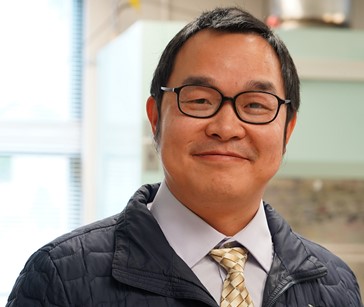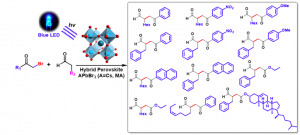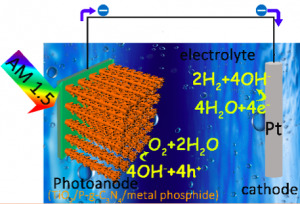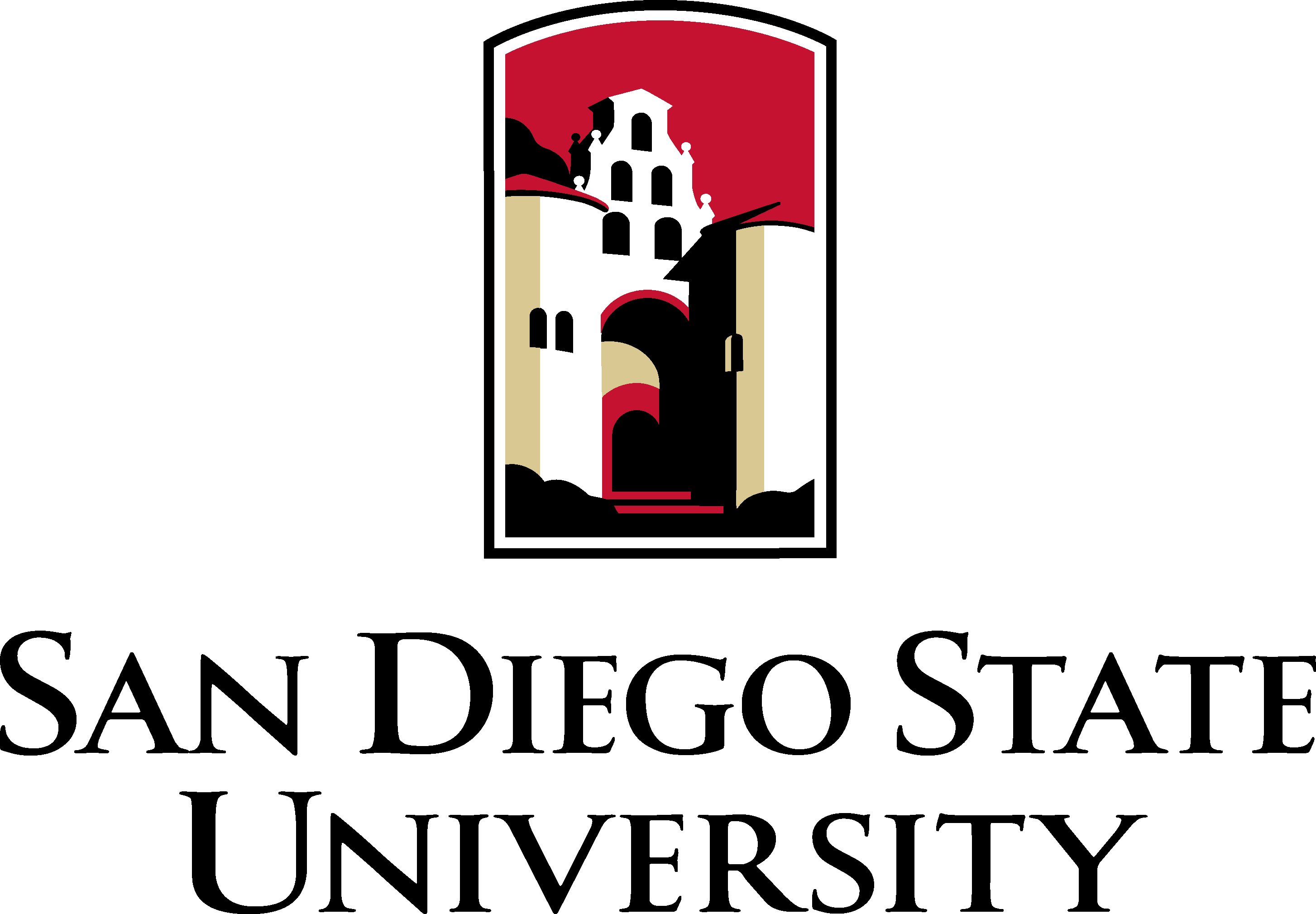Yong Yan
Professor, Inorganic, Organic Chemistry
office: GMCS-213F
phone: 619-594-5770
email: yong.yan@sdsu.edu

Yan Group Page
Curriculum Vitae
- Professor, San Diego State University, 2024—present
- Associate Professor, San Diego State University, 2021—2024
- Assistant Professor, San Diego State University, 2018—2021
Research Interests
The Yan lab explores sustainable catalytic methodology for chemical synthesis, with a focus on affordable drug design and development. The goal of the Yan Lab in the Department of Chemistry and Biochemistry at SDSU is to leverage the energy, creativity, and diversity of our students and place them at the forefront of Chemical Research and its integration with two far-separated areas, Renewable Energy and Human Health. To achieve this goal, we aim to advance the knowledge of catalysis and create novel materials that can harness renewable solar energy for challenging chemical reactions. So far, we have successfully exploited solar cell materials to catalyze basic chemical transformations while producing renewable hydrogen fuels and distinctive chemical bonds for organic synthesis. Currently, we are concentrating on a new bold initiative to capture renewable solar energy for bio-relevant life-saving pharmaceutic drug design and development, addressing the long-term catalytic challenges in asymmetric organic synthesis, akin to what nature does in the photosynthesis systems that support all life on Earth. Our focus is to advance the fundamental understanding of perovskite catalysis, particularly chiral perovskite materials, towards their spin-related charge transfer, asymmetric organic transformation, chiral-induced spin selectivity and hot-carrier for catalysis. Overall, the Yan lab is looking forward to more forthcoming imperative research outcomes integrating Chemical Catalysis with Renewable Energy and Human Health.
Selected Publications
Professor Yan's full publications list on Google Scholar
Selected publications
(* corresponding author.)- "Chiral Perovskite Nanocrystals for Asymmetric Reactions: A Highly Enantioselective Strategy for Photocatalytic Synthesis of N-C Axially Chiral Heterocycles,"
Mishra K., Guyon D., San Martin J., Yan Y.*,
Journal of the American Chemical Society 145, 17242-17252 (2023). (doi: 10.1021/jacs.3c04593.) - "CsPbBr3 Perovskite Nanocrystals for Photocatalytic [3+2] Cycloaddition.,"
Lin, Y.; Yan, Y.*,
ChemSusChem. 17, e202301060 (2023). (doi: 10.1002/cssc.202301060.) - "Perovskite Photocatalytic CO2 Reduction or Photoredox Organic Transformation?,"
San Martin J., Dang N., Raulerson E., Beard M.C., Hartenberger J., Yan Y.*,
Angewandte Chemie - International Edition 61, e202205572 (2022). (doi: 10.1002/anie.202205572.) - "Triplet Energy Transfer from Lead Halide Perovskite for Highly Selective Photocatalytic 2 + 2 Cycloaddition,"
Lin Y., Avvacumova M., Zhao R., Chen X., Beard M.C., Yan Y.*,
ACS Applied Materials and Interfaces 14, 25357-25365 (2022). (doi: 10.1021/acsami.2c03411.) - "A Nanocrystal Catalyst Incorporating a Surface Bound Transition Metal to Induce Photocatalytic Sequential Electron Transfer Events,"
Martin J.S., Zeng X., Chen X., Miller C., Han C., Lin Y., Yamamoto N., Wang X., Yazdi S., Yan Y., Beard M.C., Yan Y.,
Journal of the American Chemical Society 143, 11361-11369 (2021). (doi: 10.1021/jacs.1c00503.) - "State of the Art and Prospects for Halide Perovskite Nanocrystals,"
Dey A.; Ye, J.; Yan, Y.; Hoye, R.; Polavarapu, L.*,
ACS Nano 15, 10775-10981 (2021). (doi: 10.1021/acsnano.0c08903.) - "Photoredox Organic Synthesis Employing Heterogeneous Photocatalysts with Emphasis on Halide Perovskite,"
Lin Y., Guo J., San Martin J., Han C., Martinez R., Yan Y.*,
Chemistry - A European Journal 26, 13118-13136 (2020). (doi: 10.1002/chem.202002145.) - "V-rich Bi2S3 nanowire with efficient charge separation and transport for high-performance and robust photoelectrochemical application under visible light,"
Yuan-Yuan Geng, Chun-Lan Tao, Shi-Fang Duan, Jovan San Martin, Yixiong Lin, Xiaolin Zhu, Qian-Qian Zhang, Xiong-Wu Kang, Sui-Sui Hee, Yi-Xin Zhao, XinLi, Li Niu, Dong-Dong Qin,* Yong Yan,* Dong-Xue Han*,
Catalysis Today 350, 47-55 (2020). (10.1016/j.cattod.2019.08.008.) - "Recent Progress in Engineering Metal Halide Perovskites for Efficient Visible-Light-Driven Photocatalysis,"
Chuang Han, Xiaolin Zhu,* Jovan San Martin, Yixiong Lin, Sydney Spears, Yong Yan*,
ChemSusChem 13, 4005-4025 (2020). (10.1002/cssc.202000953.) - "Ultrafast reaction mechanisms in perovskite based photocatalytic C-C coupling,"
Wang, K.; Lu, H.; Zhu, X.; Lin, Y.; Beard, M*; Yan, Y.*; Chen, X.*,
ACS Energy Letters 5, 566-571 (2020). - "Enhanced photoredox activity of CsPbBr3 nanocrystals by quantitative colloidal ligand exchange,"
Haipeng Lu, Xiaolin Zhu, Collin Miller, Jovan San Martin, Xihan Chen, Elisa M. Miller, Yong Yan,* and Matthew C. Beard*,
J. Chem. Phys. 151, 204305 (2019). (10.1063/1.5129261.) - "Lead halide perovskites for photocatalytic organic synthesis,"
Xiaolin Zhu, Yixiong Lin, Jovan San Martin, Yue Sun, Dian Zhu, and Yong Yan*,
Nature Comm. 10, 2843 (2019). (doi: 10.1038/s41467-019-10634-x.) - "Lead-Halide Perovskites for Photocatalytic α-Alkylation of Aldehydes,"
 Zhu, X.; Lin, Y.; Sun, Y.; B. Matt; Yan, Y.*,
Zhu, X.; Lin, Y.; Sun, Y.; B. Matt; Yan, Y.*,
J. Am. Chem. Soc 141, 733-738 (2019). (doi: 10.1021/jacs.8b08720..) - "A high-performance photoelectrochemical water oxidation system with phosphorus doping g-C3N4 and simultaneous metal phosphide cocatalyst formation via a gas treatment,"
Qin, D.; Duan, S.; Quan, J.; San Martin, J.; Lin, Y.; Zhu, X.; Tao, C. Yan, Y.*,
Chem. Sus. Chem 12, 898-907 (2019). (doi: 10.1002/cssc.201802382..) - "Phosphorus-doped isotype g-C3N4/g-C3N4: an efficient charge transfer system for photoelectrochemical water oxidation,"
 Duan, S.; Tao, C.; Geng, Y.; Romero, M.; Sun, Y.; Qin, D.*; Yan, Y.*,
Duan, S.; Tao, C.; Geng, Y.; Romero, M.; Sun, Y.; Qin, D.*; Yan, Y.*,
Chem. Cat. Comm 11, 729-736 (2019). (doi: 10.1002/cctc.201801581..) - "Plasmon-Enhanced Layered Double Hydroxide Composite BiVO4 Photoanodes: Layering-Dependent Modulation of the Water-Oxidation Reaction,"
Ruirui Wang, Lan Luo, Xiaolin Zhu, Yan, Y,* Bing Zhang, Xu Xiang,* and Jing He,
ACS Appl. Energy Mater (2018). (doi: 10.1021/acsaem.8b00831..) - "Impact of Large Thermal Motion on Critical Properties of the Perovskite Photovoltaic Systems,"
Tyson, T.*; Gao, Y.; Ghose, S.; Yan, Y.*,
Scientific Report 7, 9401 (2017). (doi: 10.1038/s41598-017-09220-2.) - "Multiple exciton generation for photoelectrochemical hydrogen evolution reactions with quantum yields exceeding 100%,"
Yan, Y.*; Crisp, R.; Gu, J.; Pach, G.; Chernomordik, B.; Turner, J. A.; Beard, M. C.*,
Nature Energy 2, 17052 (highlighted in C&EN news; highlighted in Nature.com) (2017). (doi: 10.1038/nenergy.2017.52.)
